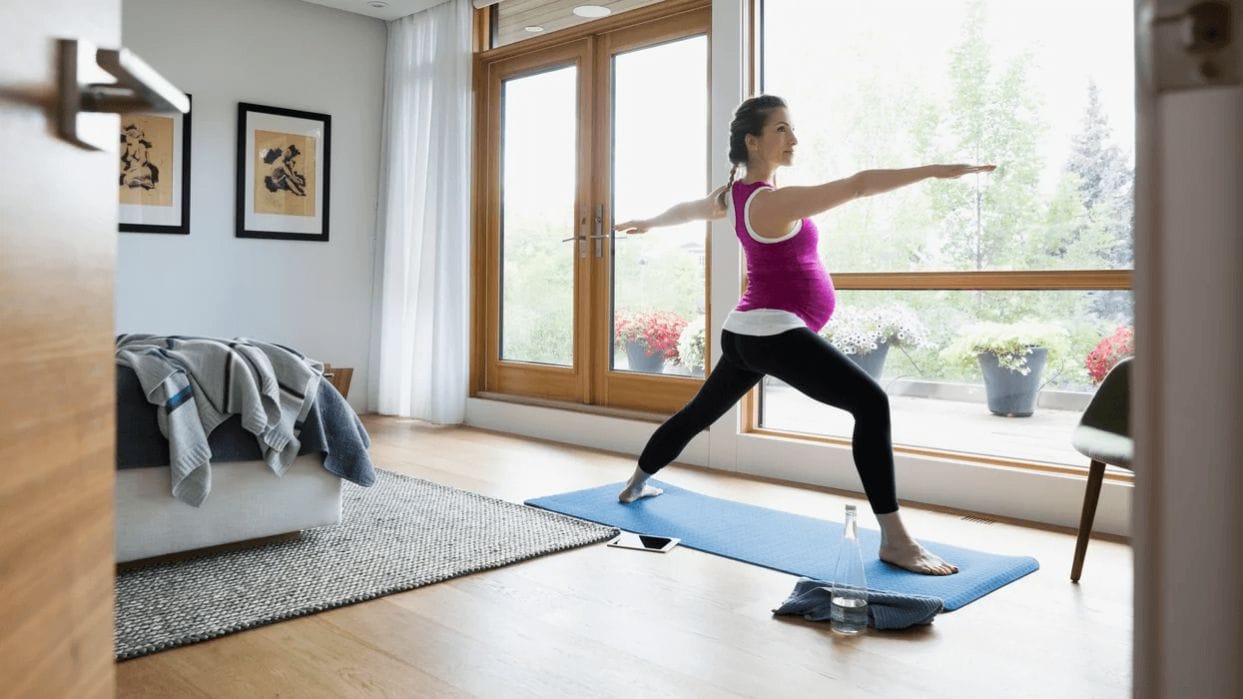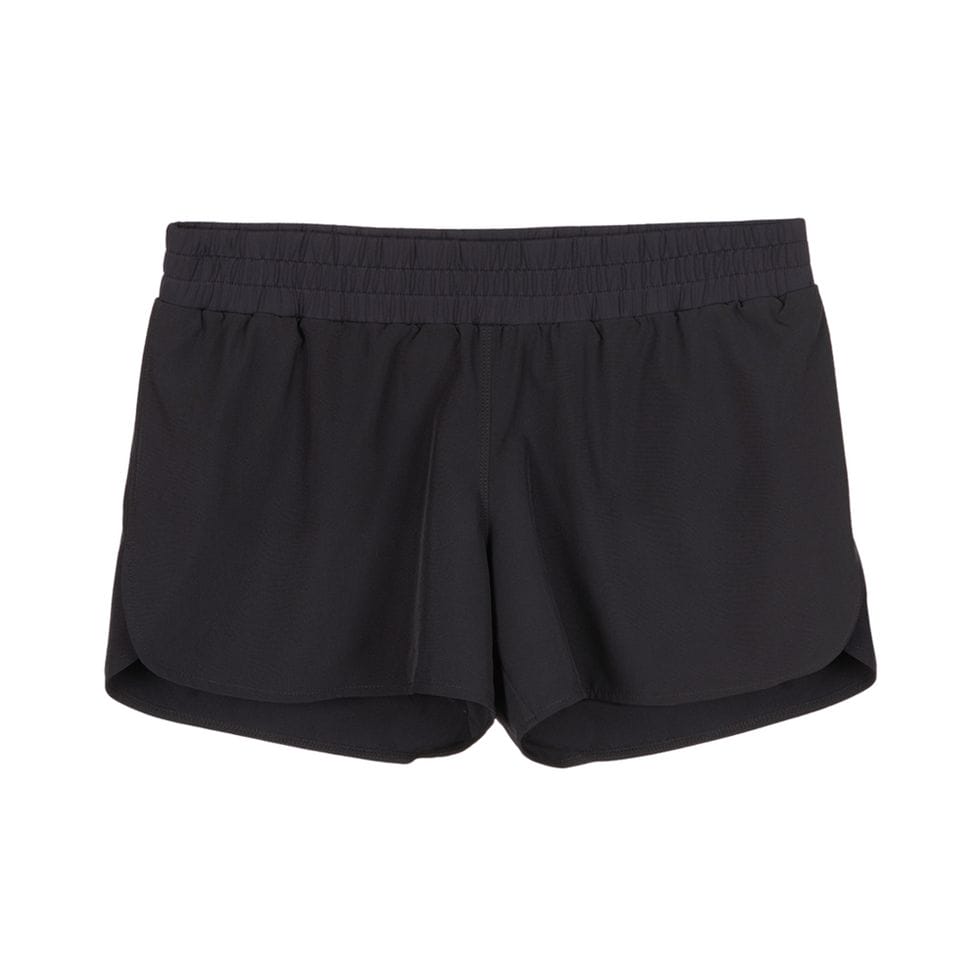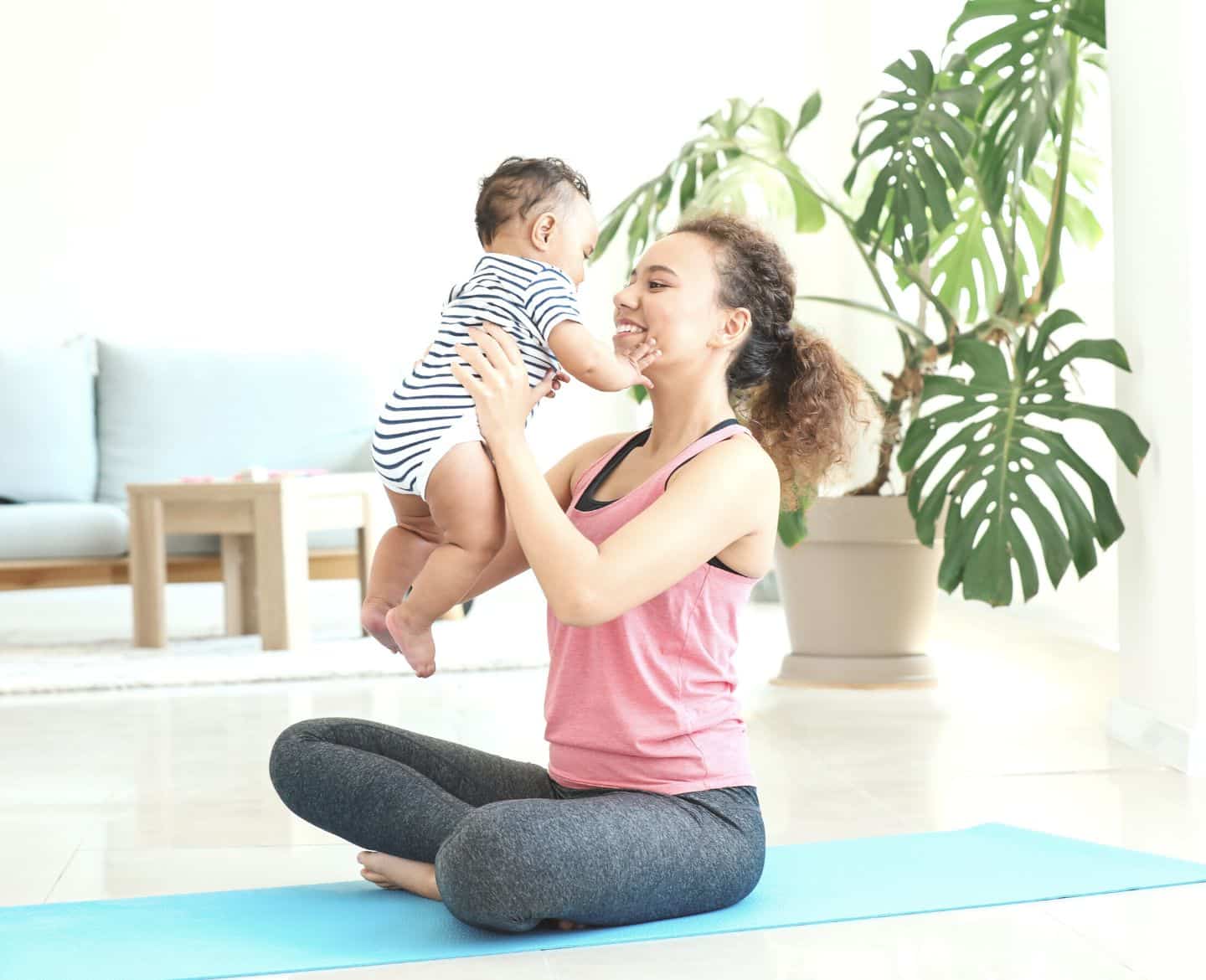How should I modify my workouts while pregnant?

According to a personal trainer.
Table of Contents
Note: The first step is always speaking with your medical professional and obtaining clearance to exercise before beginning or continuing a workout plan while pregnant!
As a personal trainer, pilates instructor and pre/post-natal exercise specialist, I always assumed I would have an extremely active pregnancy. That all came to screeching halt when I was put on pelvic rest at six weeks until further notice.
My days went from walking several miles with my dog and teaching at least one pilates class to sitting on a stability ball while I instructed others, and sitting on the couch while my husband took over dog duties.
Luckily, I was cleared to exercise again at 12 weeks but at this point, my body and energy levels had changed enough that I knew I needed to follow some new rules when it came to working out.
With the knowledge base I had built over the years but a fairly good sense of my own conditioning, it wasn’t too challenging to figure out the best daily activity for myself, but I knew a lot of other women could benefit from hearing the newest research on exercising while pregnant.
Can I do cardiovascular exercise while pregnant?
Most trainers and physicians will recommend that you do not spend significant time above 140 bpm when performing cardiovascular exercise, like running or biking. One way to keep track is to wear a heart rate monitor, or a device like a FitBit, and if you find your heart rate jumping up too high you can slow down or take a break until it lowers.
The talk test is another easy way to ensure that you’re not restricting too much oxygen to your baby during exercise. The trick is you should be able to easily carry a conversation while continuing your workout. If that’s not the case, it’s time to slow down and take a break.
One of the most common questions I get is from runners who ask me, “How long can I keep running while pregnant?” For me, running after 12 weeks felt a little “off” so I switched to a lower impact elliptical. However, I have known many pregnant women continue running into their third trimester.
How to modify: Make sure you are monitoring heart rate, following the talk test and paying attention to your body. If something doesn’t feel right, that’s your cue to change it up.
In your final trimester, relaxing increases in your body, your ligaments and joints will be looser. High impact exercise like running increases your risk for joint injury and pain so I highly recommend switching to a lower impact alternative like walking, swimming or elliptical training.
Can I do strength training while pregnant?
Prior to becoming pregnant, I did a lot of mat pilates each week. However, by the time I was cleared to exercise at 12 weeks, it’s recommended you spend minimal time on your back so you don’t restrict blood flow to your baby by compressing the Vagus nerve. I did, however, continue to do my side body, seated, and exercises on my hands and knees throughout my second trimester into my third.
When it comes to lifting weights, you want to follow the same heart rate guidelines and follow the talk test, just like your cardio. I usually recommend women lower the intensity and amount of weight they are lifting in their second and third trimesters to avoid any additional strain on your abdomen, lower back and joints.
The change in gestational weight gain, posture and balance affect your body’s ability to lift at the same intensity as you did before so you need to be aware of your new limitations and check in with yourself more often. It’s also a good idea to avoid exercises where you are holding weights above your abdomen, present a fall risk or have you spending time on your back.
How to modify: Add prenatal yoga or pilates to keep your flexibility, core muscles and strength engaged. Some of my favorite moves and poses for yoga and Pilates during pregnancy targeting your entire body are sumo squats, bird dogs, side leg raises, side plank and arm circles.
What else to be aware of when exercising while pregnant
While pregnant and in the postpartum time frame, The American College of Obstetrics and Gynecology (ACOG) recommends that if at any point you have worsening symptoms or you experience anything on the list below you should stop exercising and reach out to your medical professional.
- Bleeding from the vagina
- Feeling dizzy or faint
- Shortness of breath before starting an exercise
- Chest pain
- Headache
- Muscle weakness
- Calf pain or swelling
- Regular, painful contractions of the uterus
- Fluid leaking from the vagina
The ACOG also has a full list of exercise FAQ’s and what to avoid.
Will exercising during pregnancy help me during delivery and postpartum?
Absolutely! Recent studies have shown exercising during pregnancy has been shown to lower the risk of gestational diabetes, excessive weight gain and Caesarian section.
But it also helps women maintain strength and stability during their pregnancy that lasts long after they give birth. If you take nine months off from exercising, you will see a decrease in your cardiovascular health and your muscles mass.
By continuing to stay active during pregnancy for as long as it feels comfortable, you will maintain a level of endurance and strength to help you recover and heal your body quicker postpartum. But above all, have fun mama. You’ve got this.
Looking to outfit your workout, mama? We’ve got the gear you need in the Motherly Shop!
Anook ruby tank

Designed to expand and retract from first trimester to the third trimester to many years postpartum, the tank’s sewn-in bra pads stay put and offer added coverage while the antimicrobial liner wicks sweat and leaked breast milk.
Anook austin shorts

Made from 4 way stretch material to allow greater movement and designed to accommodate the changing female body, these amazing shorts are able to expand and retract from first trimester to the third trimester to many years postpartum.
Anook hayes tall joggers

Great for literally whatever life or kids throw at you. Designed to accommodate the changing female body with the ability to expand and retract from first to third trimester and beyond into postpartum these cozy joggers are perfect for working out, lounging at home, or anything in between.
We independently select and share the products we love—and may receive a commission if you choose to buy.





































